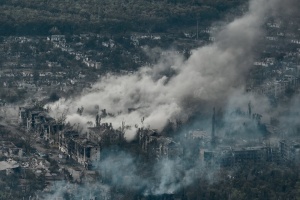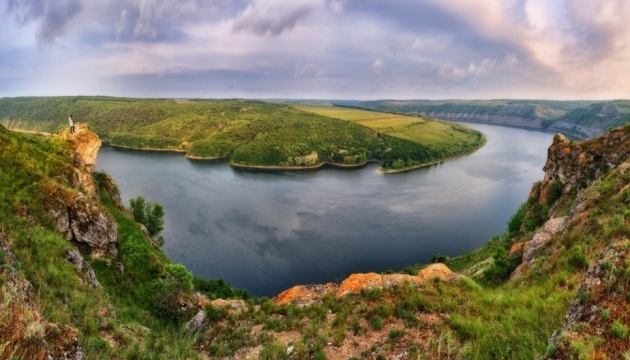
War destroys environment, but we must survive for future generations
During this time, 3 biosphere reserves, 14 nature reserves, 19 national nature parks, dozens of regional landscape parks, hundreds of nature reserves, natural monuments, protected tracts, as well as botanical gardens, dendrological parks, zoos and parks-monuments of landscape art have been in the zone of military operations and occupation. Russian occupants mine protected areas, mercilessly cut down forests, and destroy rare species of flora and fauna. Forests are burning and valuable protected areas are being destroyed. Experts believe that we have lost some ecosystems forever, and they record each case for the International Criminal Court with the definition of ecocide.
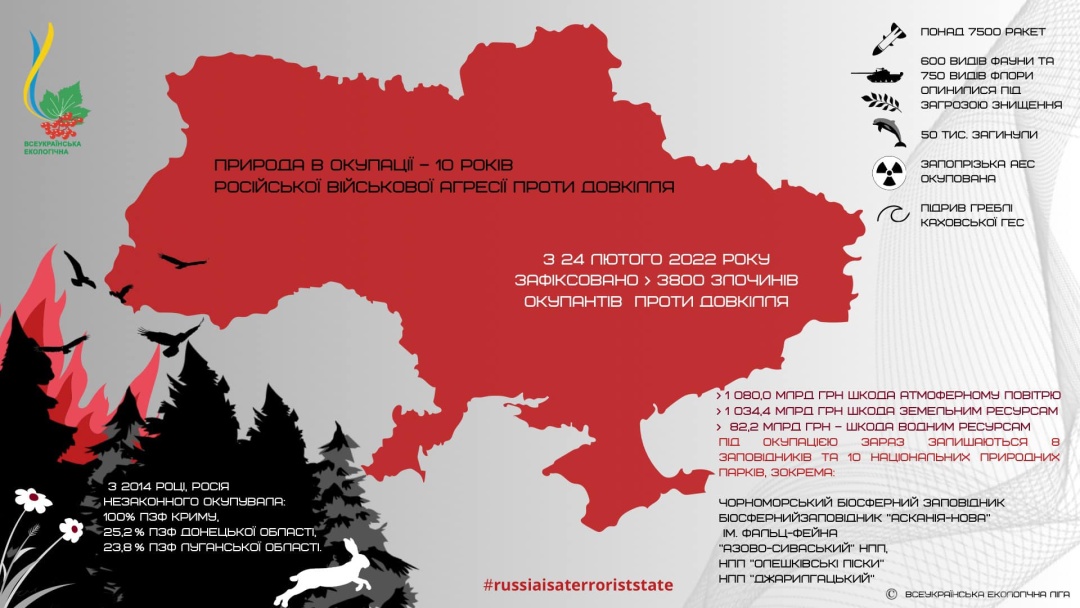
During the All-Ukrainian Scientific and Practical Conference "Nature under Occupation - 10 Years of Russian Military Aggression Against the Environment", environmentalists from different parts of Ukraine stated that as a result of shelling, Russians damaged and burned about 3 million hectares of Ukrainian forests. More than 600 species of animals, 750 species of plants and fungi, including those listed in the Red Book of Ukraine, are under threat of extinction.
20% of Ukraine's protected areas are affected by the war, 812 protected areas are in danger, and almost 1 million hectares of protected areas are affected by the war.
THE LARGEST NUMBER OF PROTECTED AREAS IN UKRAINE ARE LOCATED ON THE BORDERS - AND THEY ARE THE ONES THAT HAVE SUFFERED THE MOST
If you look at the map of Ukraine, you will see that the largest number of nature reserve fund (NRF) sites are located on the borders.
And they are the ones that have suffered the most from the war. "We all remember our beautiful national parks: the Crimean "Magic Harbor", the Yalta Mountain and Forest Reserve... In the absence of information, we cannot even imagine their current state. Although we know exactly what the Russians are doing in the occupied territories, that they do not pay attention to environmental standards, environmental rules, European norms," said Oleh Bondarenko, Chairman of the Verkhovna Rada Committee on Environmental Policy and Nature Management, during the conference.
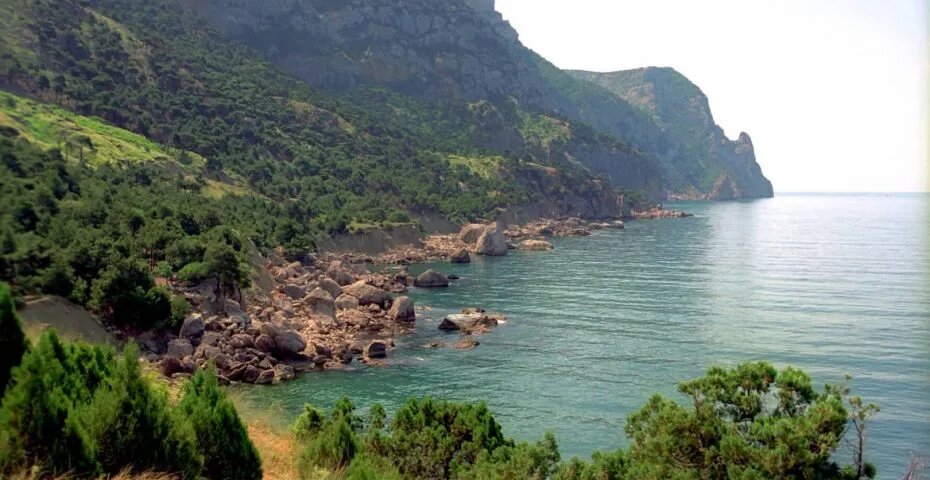
The head of the All-Ukrainian Ecological League, Tetyana Tymochko, added that there is a unique territory in Crimea - Laspi Bay, and in it - the Batylyman tract, where about 2,000 unique plants grew, including small-fruited strawberries and tall junipers. There were trees there that were 1000-1200 years old, and the Russians simply began to cut down large areas for construction. This is a terrible blow to a unique territory. And during all the years of the occupation of Crimea, such information continues to be received by our environmentalists.
A painful example of the war's impact on birds in 2015 was the aftermath of the Russian landing on the Azov coast, in the Kryva Kosa wetland in Donetsk Oblast.
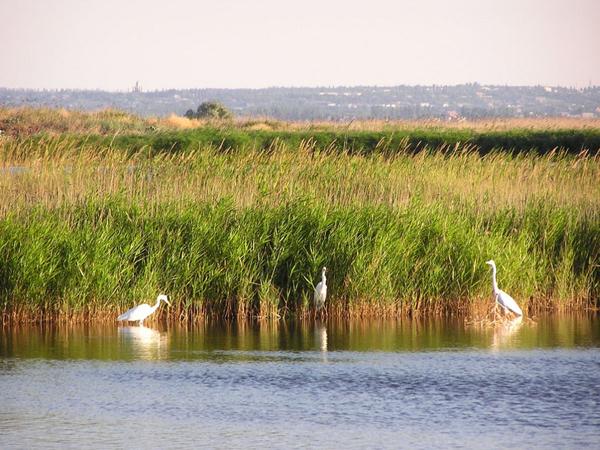
Before that, more than 60,000 pairs of terns, a large population of Dalmatian pelicans, sandpipers, and Caspian gulls listed in the Red Book of Ukraine, whose colony of 3,000 pairs was the largest in Europe, nested there. Thousands of birds were killed in a short time by shelling and the movement of heavy equipment.
Ms. Tymochko called on everyone who knows about such facts to record them and send them to the EcoThreat resource coordinated by the Ministry of Environmental Protection.
THE HOSTILITIES AFFECT ALL OBJECTS OF THE RESERVE FUND OF UKRAINE
We are talking not only about the enormous damage to the environment in Luhansk, Donetsk, Kharkiv, Sumy, and Chernihiv regions, but also in those that do not directly border the borders. This includes shelling, explosions (such as the Kakhovka dam), and mining, which makes it impossible to get to these sites and properly maintain them.
Protected areas are also affected by the need to build fortifications. After all, in 2022, the Verkhovna Rada was forced to pass a law that allowed the creation of a protective strip on the state border, taking away a significant part of the protected areas.

"We don't know when we will return our territories to the natural fund of Ukraine, in what condition they will be then, but this is a common task for all of us. I would like to emphasize that in order to bring the activities of protected areas in line with the modern requirements of European legislation, to be able to significantly expand the areas of protected areas, to create the Emerald Network (protected areas created throughout Europe to preserve endangered species and habitats) or Natura 2000 (a network of protected areas, a central element in the protection of biodiversity in the territory of the European Union) in Ukraine, we need to amend the legislation. It is necessary, it is urgent, we have to restore our country only together and only through changes in legislation that would serve this purpose," emphasized Oleh Bondarenko.
HOW THE CONSTRUCTION OF RUSSIAN FORTIFICATIONS DESTROYS THE ECOLOGY OF UKRAINE
According to Oleksiy Vasylyuk and Viktor Parkhomenko, experts of the Ukrainian Nature Protection Group, the large-scale minefields surrounding the territory damaged by the construction of trenches threaten to leave it in this form for many decades after the war.
And dugouts and other Russian fortifications are causing irreparable damage to our landscapes.
According to published data, at the end of 2023, more than 6,000 kilometers of infrastructure and fortifications were recorded on the Russian side of the front line. The Ukrainian military, for its part, is also forced to build defensive structures, but the aggressor is solely to blame for the consequences. Despite the fact that our fortifications are created in accordance with international law, they still have a huge impact on nature.
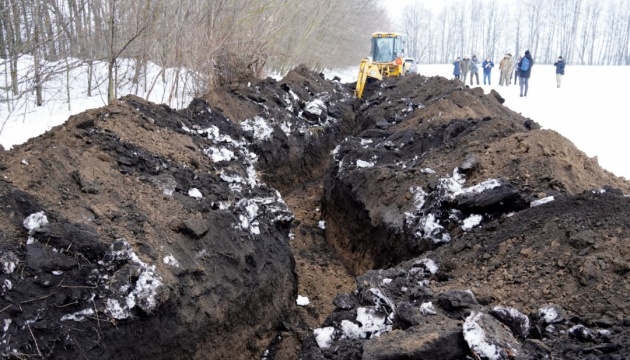
Although construction does not have the same chemical impact as ammunition explosions, it causes mechanical damage to the soil cover and can be called second only to explosions in terms of the scale of its consequences, experts say.
Moreover, fortifications are "attracted" by shelling, so the radius of impact on the nature of a single trench, ditch or dugout is from 20 to 100 meters or more.
DESTRUCTION OF FLORA AND FAUNA, BACTERIOLOGICAL THREAT, DESERTIFICATION...
The main negative environmental factors created by fortifications include: destruction of fauna habitats, destruction of vegetation, disturbance of soil cover and the hydrological balance of groundwater, creation of a shortage of natural moisture and desertification.
Garbage pollution. Russian soldiers who live for months in fortified areas leave all the products of their life: garbage, feces, and often the bodies of their dead or even mass graves in the immediate vicinity of dugouts and trenches.
Bacteriological hazard. The presence of a large number of remains of the dead creates a high risk of bacteriological contamination, which significantly affects the prospects for using the largest battlefields after the war.
Destruction of rare plants and animals. During an expedition in the fall of 2022 to the Kamianska Sich National Nature Park in Kherson region, which was liberated from occupation, the occupiers used rare plants for camouflage - several species of feather grass and a number of other species of steppe flora. And massive cases of small animals or insects (sometimes "Red Book" species) falling into trenches and ditches mean quick deaths, as it is easier to kill an animal than to catch it and release it, especially if it is a snake or rodent.
Restriction of animal migration. The construction of walls and fences along state borders leads to serious restrictions on the movement of terrestrial animals and, as a result, to their mass deaths or disruption of life cycles.
Dugouts that become large tree cemeteries. Since most permanent shelters are reinforced with tree trunks, this leads to high consumption of quality wood. Scots pine trunks are mainly used for the walls and roof of the dugout. For a fortified dugout for 5-10 people, trunks of 20-50 trees are needed. Given climate change, it will probably no longer be possible to grow new coniferous forests in the short term.
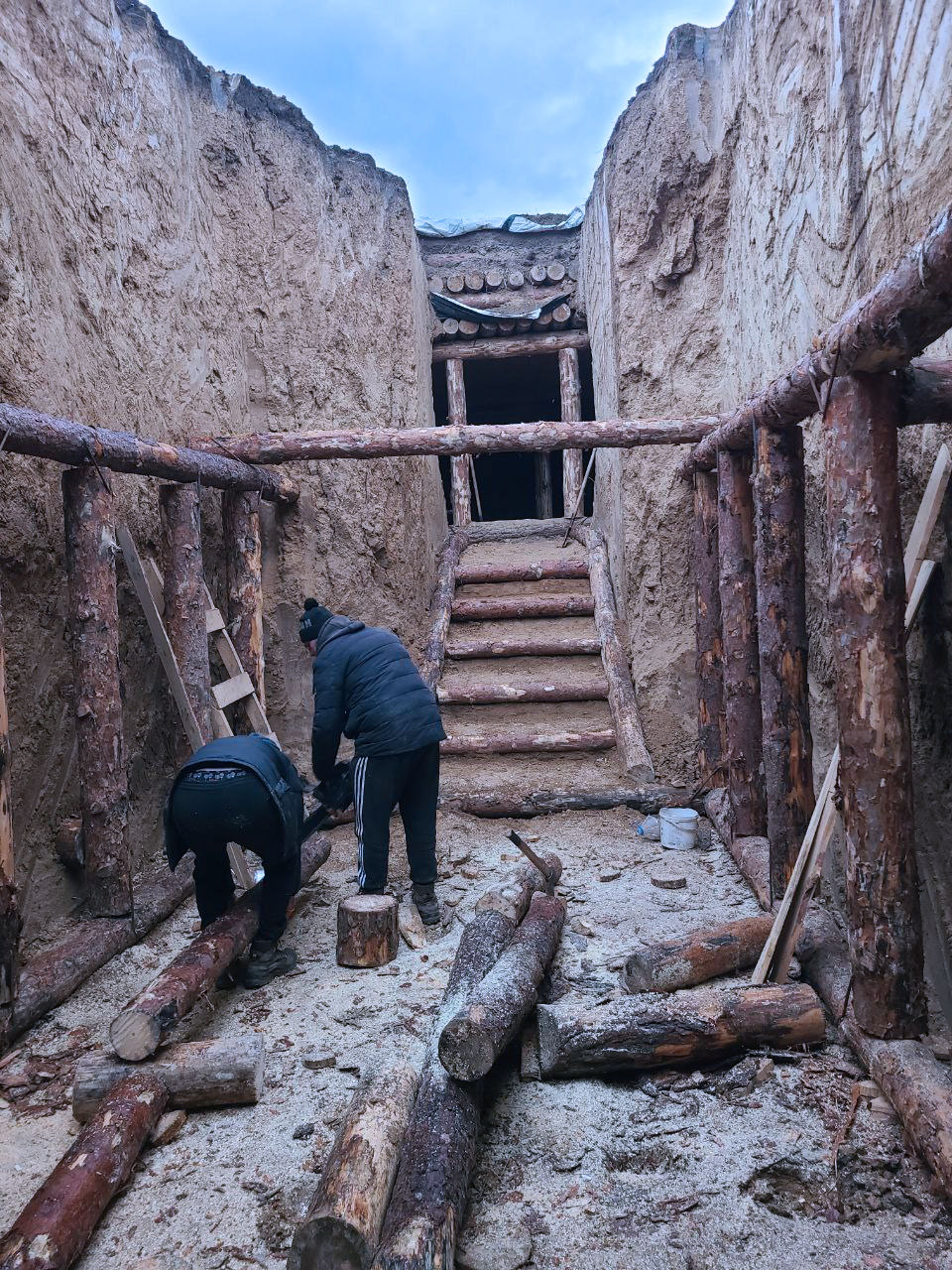
Experts point out that the Ukrainian military de jure uses only legally harvested timber, officially obtained in forested regions of the country, where reforestation is not hampered by climatic conditions. Ukraine has even introduced a special procedure for the supply of wood for defense purposes.
According to environmentalists, after the war ends, the elimination of fortifications will be one of the most difficult tasks of Ukraine's green recovery and will require an individual approach for each case. And given the scale of ammunition use, it may turn out that the area where the fortifications were located will become a kind of nature restoration zone in the future, which will be inaccessible to farming. Perhaps this area should not just be left to "self-restore" but should be helped to turn into a stable ecosystem as soon as possible.
1.2 MILLION HECTARES OF PROTECTED AREAS NEED DEMINING
According to preliminary estimates by the Ministry of Environmental Protection and Natural Resources, 1.2 million hectares of protected areas need to be surveyed and demined, and 160 areas of the Emerald Network, covering an area of almost 3 million hectares, are under threat of destruction. 82 areas of the Emerald Network have been occupied, and 17 wetlands of international importance, which are protected by the Ramsar Convention (Convention on Wetlands of International Importance, especially as waterfowl habitats), are at risk.
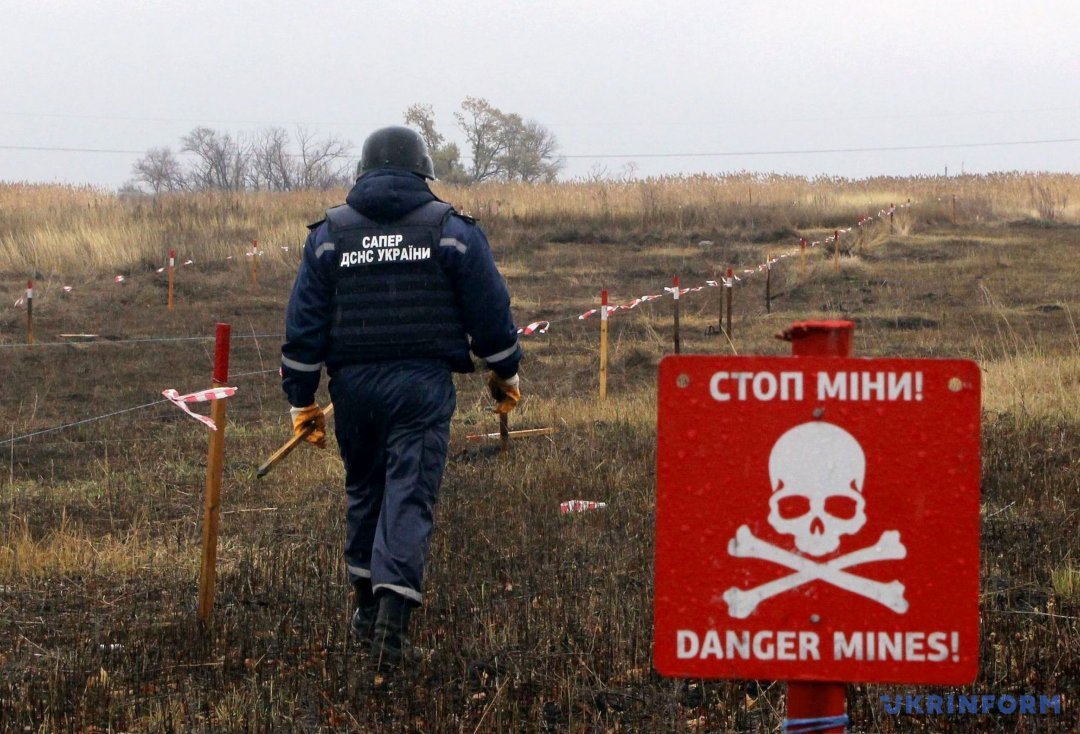
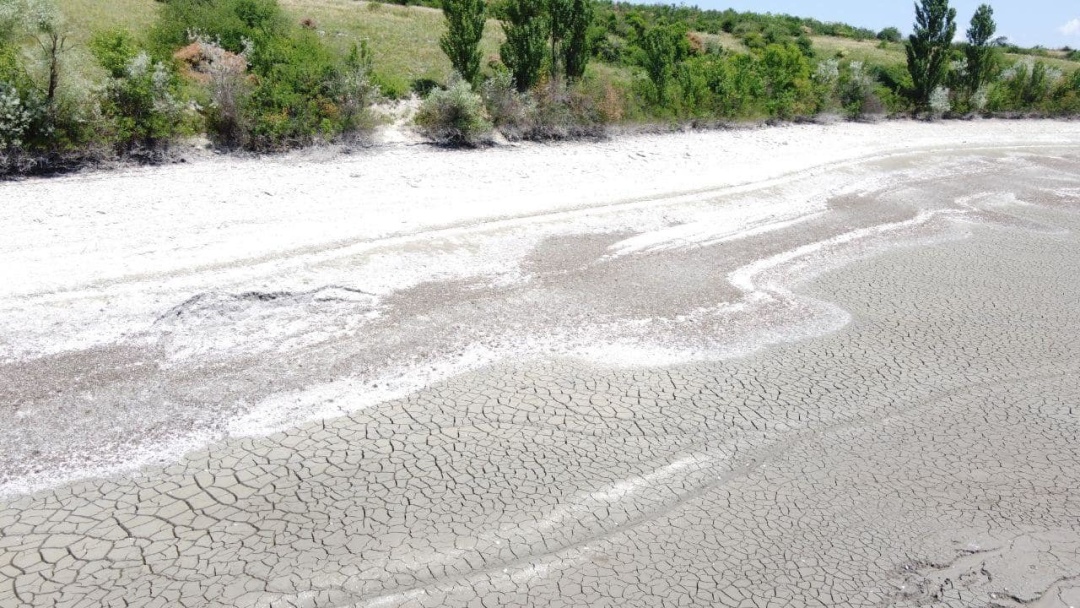
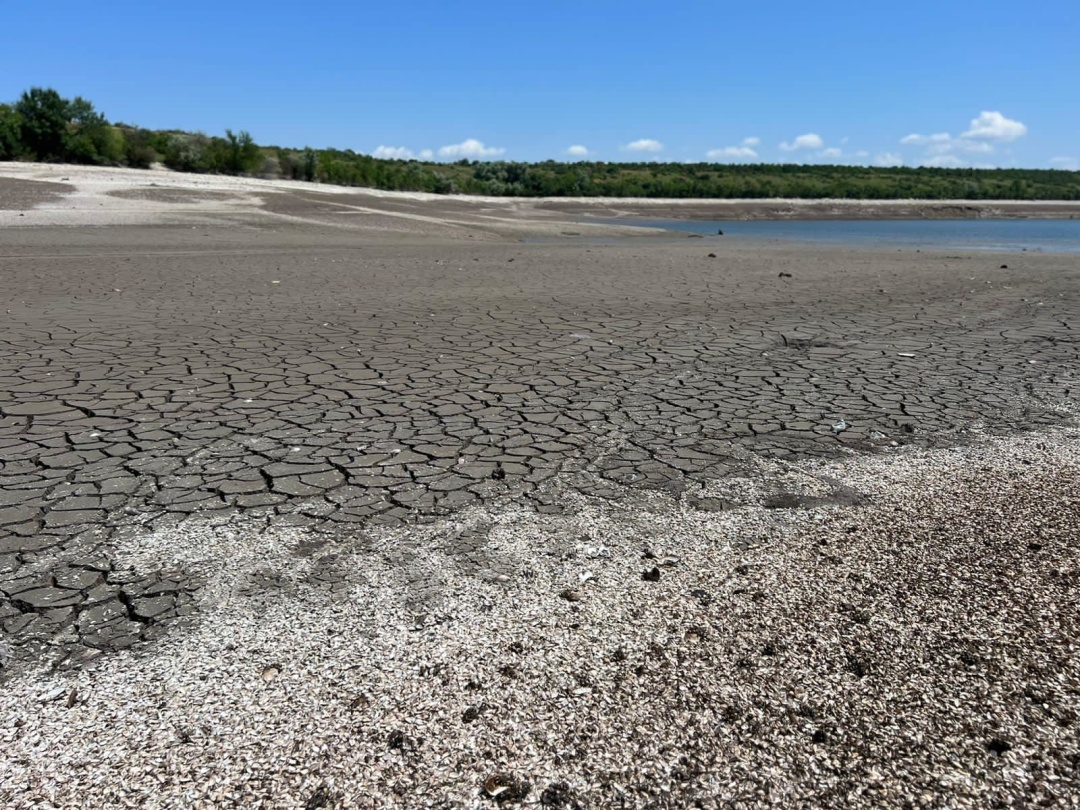
According to Oleksandr Krasnolutskyi, Deputy Minister of Environmental Protection and Natural Resources of Ukraine, two wetlands of international importance were almost destroyed as a result of the explosion of the Kakhovka hydroelectric power plant dam. The national parks "Velykyi Luh", "Kamianska Sich", and "Nyzhniodniprovskyi" were affected. The occupiers do not spare nature, in particular, 80 percent of the forest plantations of the Holy Mountains National Nature Park were destroyed by fires or shelling, Sviatoslav's Biloberezhzhia (Sviatoslav's White Coast) - more than 4 thousand hectares of territory burned out, Kamianska Sich - 1 thousand hectares of ecosystems burned out, and now the occupiers are building dugouts, anti-tank ditches, cutting down trees, and the occupiers are taking animals from the Askania-Nova Biosphere Reserve in violation of the Convention.
Mr. Krasnolutsky expressed his gratitude to the employees of national parks, many of whom, in addition to protecting the environment, are also defending our country with arms: more than 160 employees of national parks have been mobilized to the Armed Forces, unfortunately, 10 of them have already been killed. Eternal memory to the Heroes...
THE BIGGEST DAMAGE TANKS CAUSE TO THE ECOSYSTEM
Another huge harm to the ecosystem is caused by Russian tanks that pollute the atmosphere and compact the soil.
The head of the Mykolaiv regional organization of the All-Ukrainian Ecological League, PhD in Engineering, Yevhen Bezsonov, who is now in the Armed Forces, has calculated and substantiated the damage caused to Ukraine's ecosystems by the use of Russian tanks. At the beginning of the full-scale invasion, Russia concentrated 1,200 tanks near the state border of Ukraine.
Based on the fuel consumption of these monsters, the expert calculated the daily environmental damage. In monetary terms, this is USD 43500 every day.
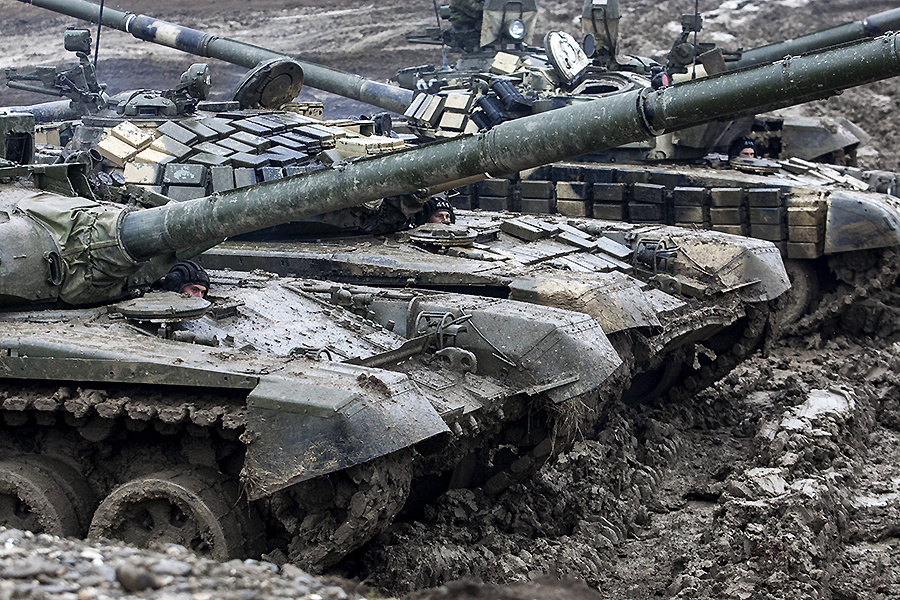
Another devastating impact is that tanks compact the soil. A vehicle weighing 10 tons compacts the soil to a depth of 60 centimeters. A tank weighs 40+ tons. So, in addition to smoking, burning, and killing, tanks also spoil agricultural land, destroy biological harvest in ecological systems, which triggers a chain of transformational changes in the system. The saturation and development of ecological systems is disrupted, and evolution stops. Soil compaction causes a decrease in plant productivity in agroecosystems - yields on compacted soils can drop by 40-60%.
Bezsonov calculated that the damage caused by soil compaction by Russian tanks amounts to USD 4.5111 billion. In the long term, given that soils recover from heavy compaction over several years, the losses increase tenfold and reach USD 45.111 billion.
Similar estimates were obtained for airplanes flying low overhead, bombing populated areas, firing missiles, crashing, and exploding.
ABOUT 30% OF THE TERRITORY OF OUR COUNTRY IS CONTAMINATED WITH UNEXPLODED ORDNANCE
"Every shell crater is dangerous for the life and health of citizens and the environment. And each crater is potentially a carrier of toxic substances," says Kateryna Polyanska, an ecologist at the international charitable organization Ecology, Law, and Human.
"About 30% of the territory of our country is contaminated with unexploded ordnance. This includes mine contamination and contamination by various shells that carry toxic substances. Accordingly, all components of our environment: atmospheric air, water, soil, flora and fauna, climate, and terrain - suffer from such pollution.
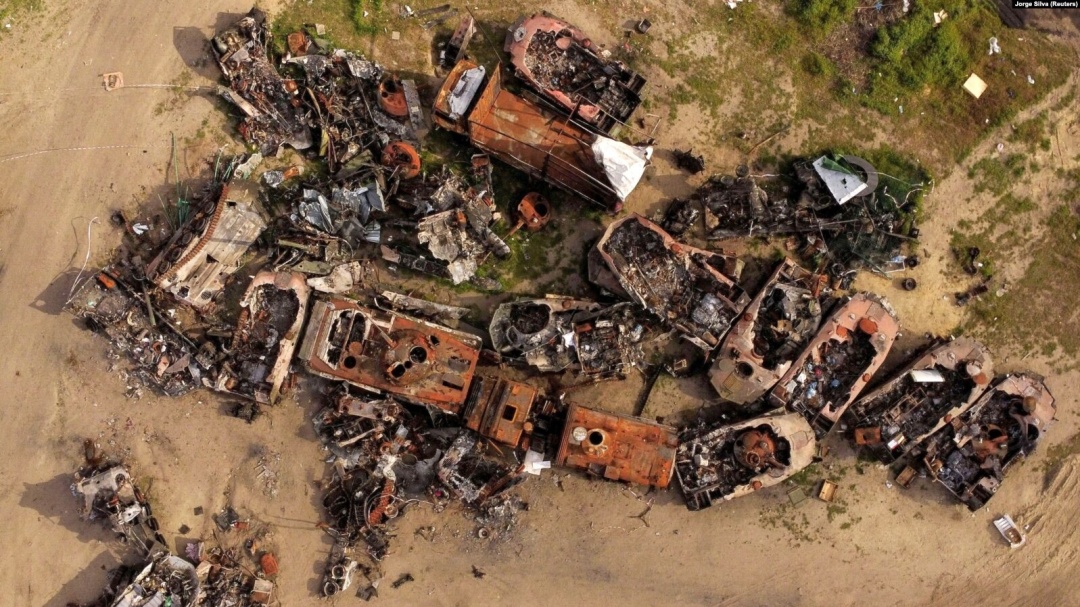
The pollution at the sites of military operations is still very high: burned equipment, houses, warehouses, and oil depots. Ashes are also a source of environmental pollution, especially during rain and windy weather, not only the air, but also soil and water are polluted.
Therefore, military operations affect all components of natural complexes: air pollution with toxic gases during shelling, physical impact on natural landscapes through the construction of fortifications, the destructive effects of fires at industrial facilities and toxic waste storage sites, as well as landfills containing carcinogenic substances that are further released into the environment when interfered with.
WAR IS THE MAIN FACTOR IN THE MASS DEATH OF BLACK SEA CETACEANS
Russian armed aggression has caused a real ecocide of Black Sea cetaceans. Since the beginning of 2022, in the Sevastopol bays of the occupied Crimea, Black Sea animals have been going through a real hell created by humans due to the noise load from sonars on the water area, the impact of torpedoes, bombs and mine explosions.
Powerful sonar was operating in the waters near Sevastopol, in the places where the military fleet was deployed, and this can lead to temporary or permanent hearing loss, cause stress and upset the balance of predator detection. Noise exposure increases the risk of premature death of whales and dolphins.
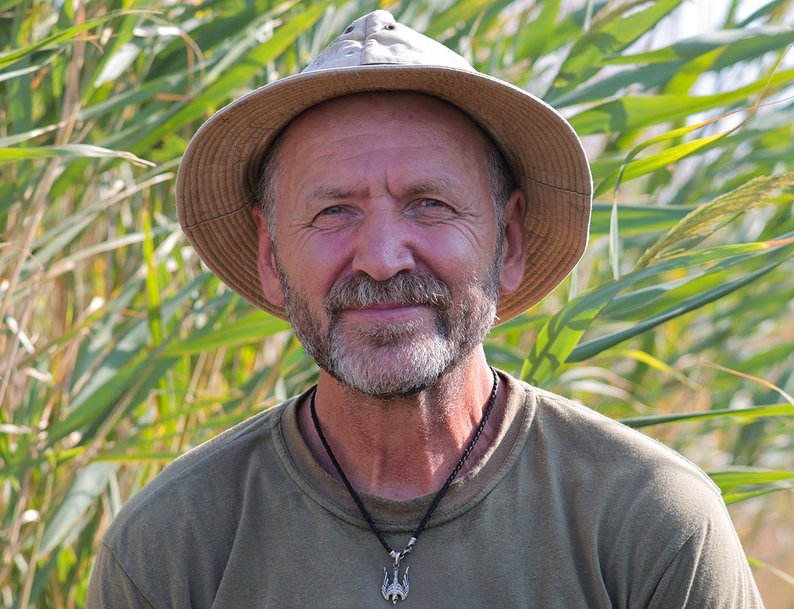
According to Ivan Rusev, Doctor of Biology, Head of the Research Department of the Tuzly Estuaries National Nature Park, the fauna of Ukraine includes three species of marine mammals in the Black and Azov Seas: harbor porpoise, common dolphin, bottlenose dolphin, and monk seal. All three species of Black Sea cetaceans are listed in the Red Data Book of Ukraine: the Azov dolphin is listed as endangered, while the common dolphin and bottlenose dolphin have the status of vulnerable.
In the pre-war period, scientists recorded an average of 3 cetacean corpses per year, while only on 6 km of the coast in the areas bordering the national park, Ukrainian scientists have found 52 animal corpses since the beginning of the Great War in 2022.
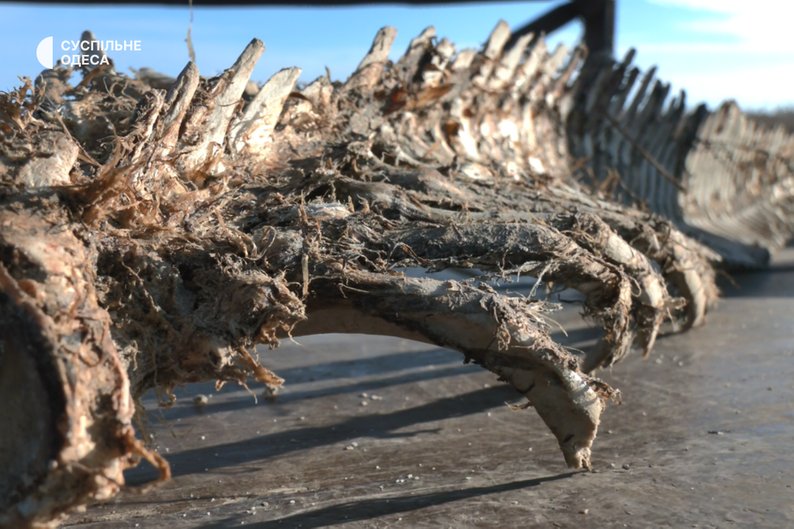
In 2022, about 3,000 dead cetaceans were recorded on the Black Sea coast in all countries. On average, only 5% of dead animals wash ashore (95% drown in the depths of the sea or ocean). Therefore, environmentalists estimate that at least 50 thousand Black Sea cetaceans of three species died during the war.
Experts believe that this extraordinary number of deaths is due solely to the lethal effects of sonar from Russian surface ships and submarines, mine explosions, and bombing during the de-occupation of Zmiinyi Island.
Scientists see the way to preserve the cetaceans in a protected area of about 3,000 square kilometers, which will need to be created in the Black Sea in the postwar period by expanding the territory of the Tuzly Estuaries National Park, where dolphins could reproduce in natural conditions.
AFTER THE DE-OCCUPATION OF THE CHORNOBYL RESERVE, LARGE-SCALE DEFORESTATION AND SAND EXTRACTION WERE DISCOVERED
The Chornobyl Radiation and Ecological Biosphere Reserve is one of the youngest and largest objects of the nature reserve fund of Ukraine. And it so happened that it was one of the first to be affected by the war, as the exclusion zone became the route for the penetration and deployment of Russian military groups involved in the "Kyiv in 3 Days" operation.
The territory was under occupation for one month and one week, and there were no intense hostilities there - only a few artillery attacks at the beginning of the invasion. The specialists of the reserve did not have access to its western part, which was subjected to more intense artillery strikes, but they could not detect any significant damage on aerial photographs.
On April 2, 2022, the last units of the occupiers' military equipment left the exclusion zone. On the way out, the Armed Forces of Ukraine launched missile strikes against the retreating troops, but it was not on the territory of the reserve.
However, after the de-occupation, experts of the Chornobyl Biosphere Reserve recorded widespread use of natural resources by the enemy: deforestation, sand extraction, disturbance of soil cover due to fortifications, massive pollution with household waste, and electronic waste.
"When we came back, not a single office had a whole system unit - they had been scavenged for non-ferrous metals. In the bushes, there were just scatterings of disassembled equipment," said Denys Vyshnevsky, head of the scientific department of the Chornobyl Radiation and Ecological Biosphere Reserve. According to him, a long-term consequence of the occupation is that the reserve's specialists have fewer opportunities to obtain information.
Due to security requirements, they cannot use quadcopters to collect information. Due to the location of the defense forces on the territory of the reserve and the exclusion zone near the border, specialists cannot access it due to security requirements and mine danger.
RUSSIANS ARE PROUD THAT THE ASKANIA-NOVA RESERVE HAS NOW BECOME A "RUSSIAN" RESERVE AND DO NOT DELIBERATELY DESTROY IT
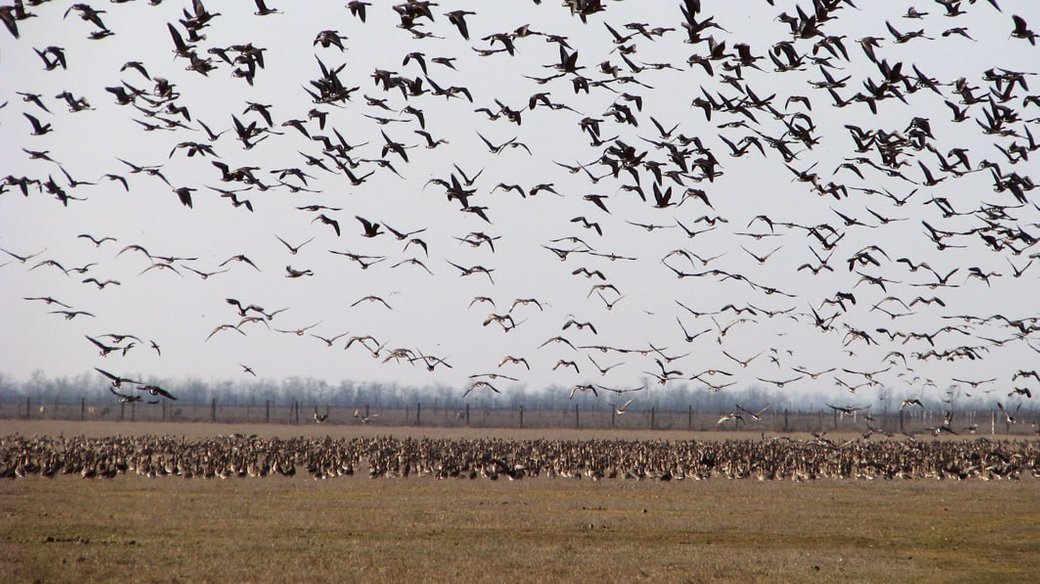
The Askania-Nova Biosphere Reserve of the F.E. Falz-Fein National Academy of Agrarian Sciences of Ukraine is located in the Kherson region, and thus, from the very beginning of the invasion, it was in the deep rear of the enemy. There were no hostilities on its territory, but it was almost a disaster because of the road used by the occupiers, which is used by heavy military equipment. Russian helicopters and airplanes regularly fly over the reserve, polluting the territory, frightening and killing birds and animals, especially ungulates, of which there are several hundred.
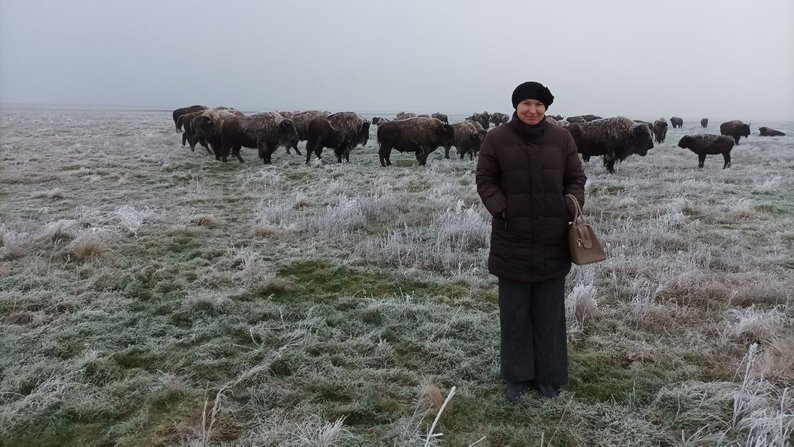
Nataliia Korinets, the scientific secretary of the Askania-Nova reserve, said that several buffaloes have already died due to the criminal actions of the occupation's illegitimate administration and incompetence. There is a danger of the spread of infectious diseases, which has not been typical for this territory for decades. The dendrological park has also suffered - massive felling is currently taking place, and some plants have dried up.
During the occupation, 46 fires broke out on the territory of the reserve, 5500 hectares burned, including 2200 in the protected zone. The largest fires occurred on August 22 and September 1, 2023, when more than 300 hectares of the protected steppe burned. Several times, the fence was destroyed, and animals got out. Such cases are very dangerous, because if they go outside the fence en masse, they can be killed or die due to lack of water. According to the expert, if the fences are destroyed, the same situation may occur that was recorded more than 100 years ago during the civil war, when saigas left the reserve and disappeared.
She said that during this period, the reserve existed on feed stocks created before the occupation, and thanks to charitable contributions, various products worth UAH 7 million 800 thousand were purchased. But they have come to an end and it is not known what will happen next
However, Ms. Nataliia still believes in the rescue and restoration of Askania-Nova: "Regarding the spread of fake information, I want to emphasize that the situation in the reserve is not as bad as described - the Russians are extremely proud that the reserve has now become a 'Russian' reserve and are not deliberately trying to destroy it. However, some of the ungulates were taken out in December last year and in March - another 10 animals. This is what we know about.
This is the 3rd war in the history of the reserve, and, despite everything, I hope that after our victory it will be restored," says Nataliia Korinets, scientific secretary of the Askania-Nova Biosphere Reserve.
MINISTER: WE ARE DEVELOPING THE WORLD'S FIRST GLOBAL PLATFORM FOR STUDYING THE ENVIRONMENTAL CONSEQUENCES OF WAR
Since 2014, the Ukrainian Ecological League has been systematically recording the damage caused by hostilities to natural ecosystems in the occupied territories of Donetsk and Luhansk oblasts and Crimea and continues to do so throughout the country.
Since 2022, the state of Ukraine has begun to record these damages at the international level to appeal to the International Criminal Court, with the definition of ecocide. Tetyana Tymochko is confident that the developments of environmental experts presented at the All-Ukrainian Conference and the resolution adopted by its participants can be used in government decisions. After all, the first national roundtable was held by the Ukrainian Ecological League on July 29, 2014, and many of the proposals that were developed then have been adopted by the government and are being implemented over the years.
Today, the Ministry of Environment of Ukraine has taken on obligations that did not exist before the full-scale invasion, the main ones being the recording of ecocide, calculation of damages and advocacy in the international arena.

Ruslan Strilets, Minister of Environmental Protection and Natural Resources of Ukraine, emphasized that the consequences of the Russian occupation and invasion are felt not only here and now, but also around the world, and the fate of future generations depends on how we take care of the environment now, in times of war.
The Ministry is actively working with international partners. Since June 2023, an international working group on the environmental consequences of the war, co-chaired by the Head of the Presidential Office Andriy Yermak and former Swedish Deputy Prime Minister Margot Wallström, has been working on an Environmental Treaty for Ukraine and has already presented it.
"This is our handbook - recommendations for responsibility and environmental restoration. Today, we are doing our best to scale this document and make it relevant not only for us but for the whole world. We are developing the world's first global platform for studying the environmental consequences of war. The relevant declaration (its creation is part of the action plan to implement Clause 8 of the Peace Formula to stop ecocide and recover reparations from the aggressor for the destroyed environment - ed.) All our efforts to protect the environment are a powerful signal that Ukraine will survive, we can and should cooperate with us, and such cooperation is not risky but mutually beneficial," said Environment Minister Ruslan Strilets.
The war is on, Russia is killing our people every day, depriving them of their homes, destroying infrastructure and causing irreparable damage to our nature. The Ukrainian military is fearlessly defending the country, civilians are helping the frontline in every way possible, and environmentalists, together with government officials, are using scientific potential and tools to protect the environment and are ready to go this way for future generations, despite Russia's armed aggression. We all strive to change the situation for the better, dream of a green recovery of Ukraine and believe in victory.
Lubov Baziv. Kyiv
First photo: Ukrainian Ecological League / Facebook




